For my final project, I plan on creating a bag (or multiple bags if I have time) for bikepacking. If you are not familiar, bikepacking is the combination of mountain biking and backpacking. The sport is particularly laissez-faire. I have read multiple blogs that say all you need to do is strap a sleeping bag onto whatever bike you have and go. However, as bikepacking gains popularity, the gear for it seems to be conforming into more of a standard gear set. One of the most common areas to attach gear to a bike is the handlebars, and as a result, handlebar bags have become quite popular.
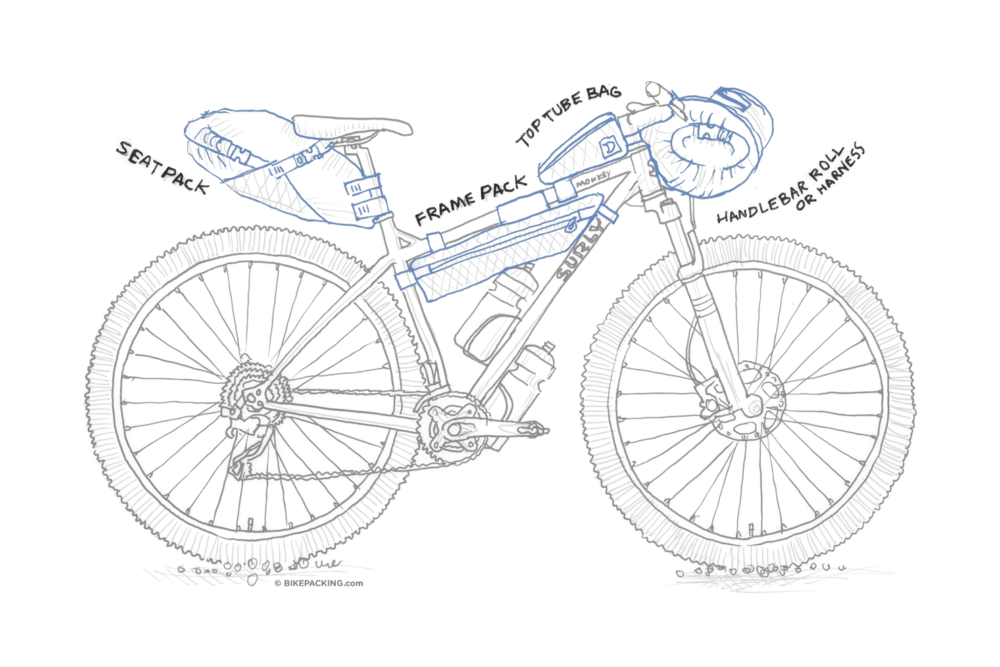
Bikepacking.com diagram of bikepacking bags
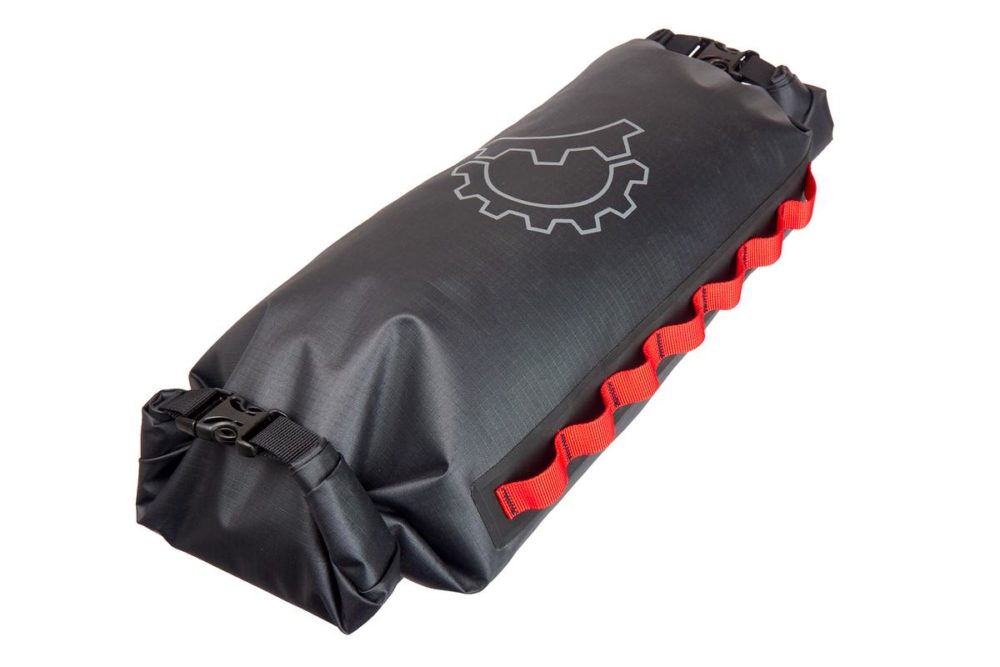
Relevate.com image of the Salty Roll
A common type of handlebar bag is a waterproof tube with clips sewn onto each end. The brand Relevate calls their version a “Salty Roll” (shown above). The ends are rolled to ensure waterproofness. This is basically just a normal dry bag that is open at both ends.
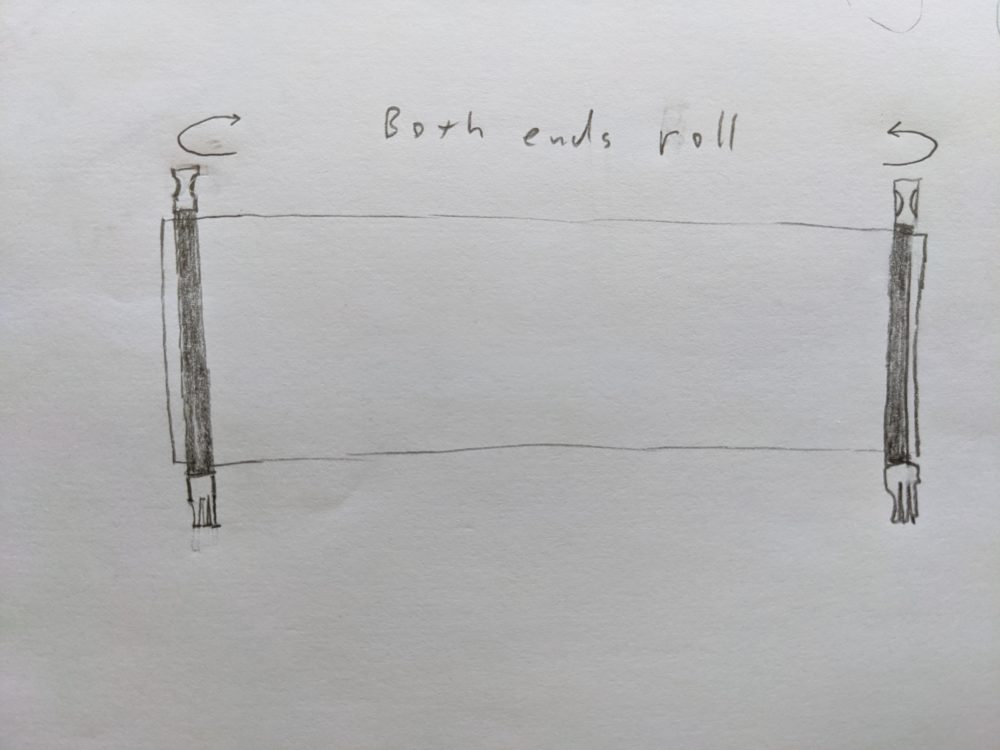
Basic handlebar bag sketch
I have tried sketching the handlebar bag in its closed state, but I struggle with the rolled ends. In any case, I first wanted to think about how currently on the market products are probably made. I believe that a handlebar roll would start as a rectangular piece of waterproof fabric. This rectangle would be sewn into a cylinder, the seam covered with waterproofing tape, then the nylon webbing straps would be sewn into place with clips.
Once, I had a general understanding of what a purely functional bag would be like, I wanted to try to explore different aesthetics. In my brainstorming I came up with the ideas of a nature theme, 80s colors, futuristic, retro futurism, minimalist, and streetwear. Ultimately, I decided to sketch out the minimalist and streetwear versions of the bag because they seemed the most form altering. The other designs would mostly be attained by color choice. It can be fairly difficult for the average person to acquire waterproof fabric in very specific colors.
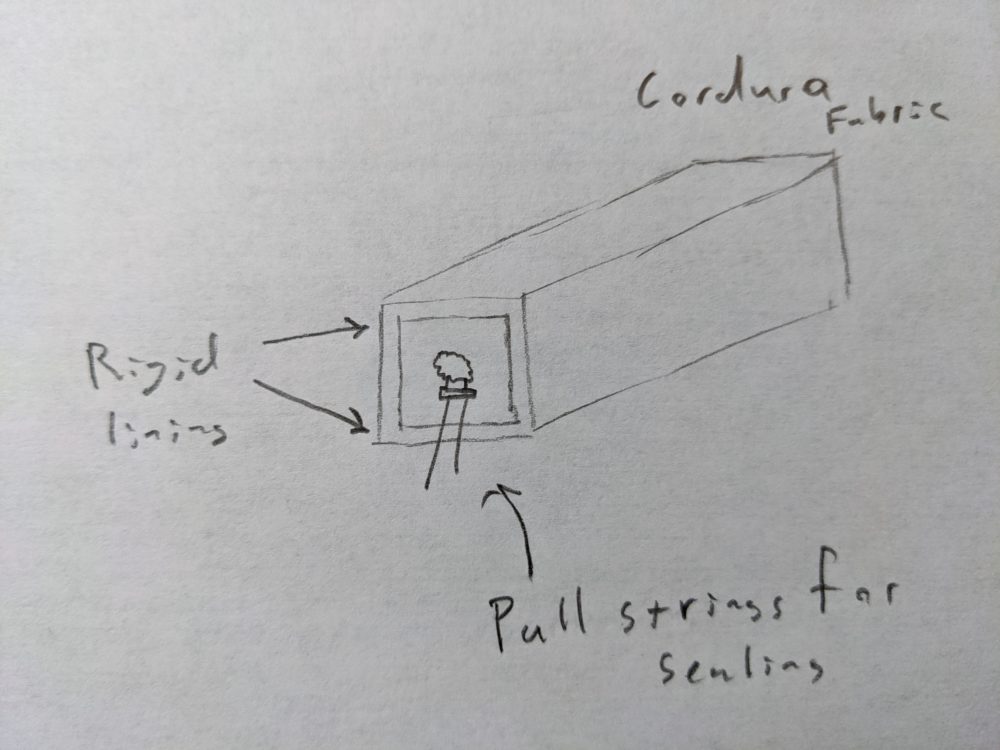
“Modern” style handlebar bag sketch
For the modern style handlebar bag, the defining characteristic would be its shape. I chose a square prism shape with scrunched ends. In order to achieve this shape, an internal structure would be necessary. It is unadorned and exists only to carry other items. I like the idea of this because it aligns well with many ideas found in bikepacking. One common idea in bikepacking is that if something moves, it can break. Therefore, a rigid bag would be less likely to break and leave you stranded in the wilderness with your belongings unattached to your bikes. Additionally, bikepacking is a fundamentally minimal/simple activity. It’s just you and the bike, riding all day without thinking. What I don’t like about the minimalist design is its complete disregard for aerodynamics. While bikepackers aren’t necessarily that concerned with speed, it does seem a little silly to create a wall on the front of your bicycle for air to push against.
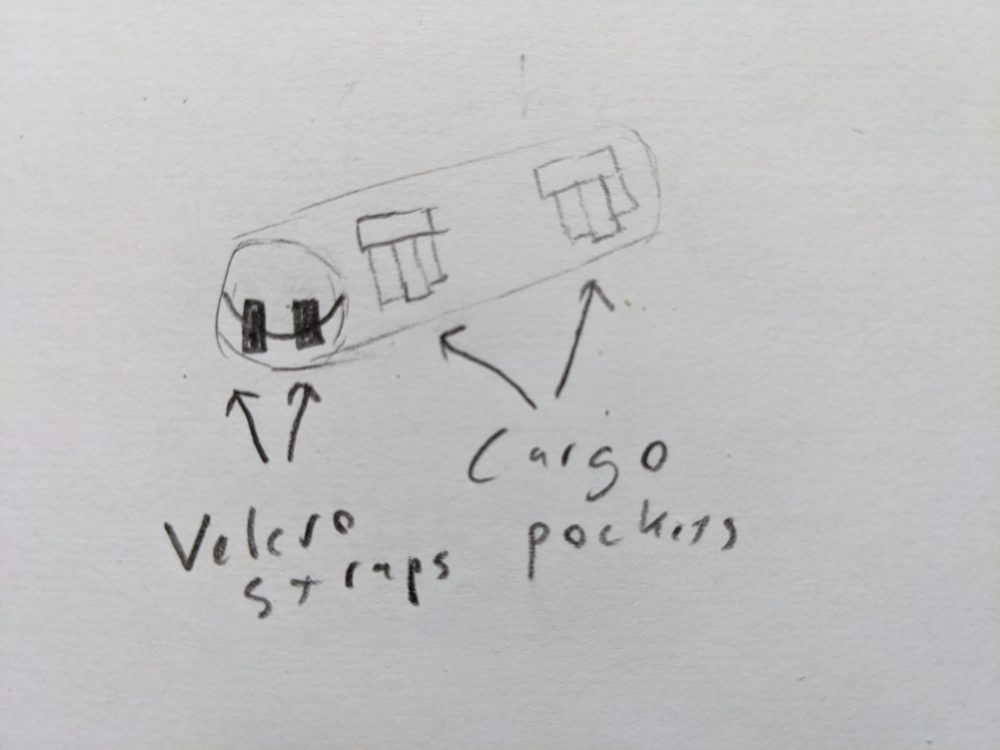
“Streetwear” style handlebar bag sketch
The streetwear bag’s goal was to be about as maximalist as possible. It is a refreshing change of pace from the minimalist design I spoke about above. The colors would be bright and potentially use bold patterns. One idea for materials would be to find name brand products, like Nike, Adidas or Supreme, and cut them down into fabric that could be sewn into my shape. This endeavor could prove to be quite expensive, however. Additionally, the streetwear bag incorporates large cargo pockets on the front and velcro straps on the sides.
No matter what I end up going with, I am glad that I have pursued multiple different possibilities.
[1] https://bikepacking.com/plan/guide-to-bikepacking-bags/ [2] https://www.revelatedesigns.com/index.cfm/store.catalog/Handlebar/Saltyroll
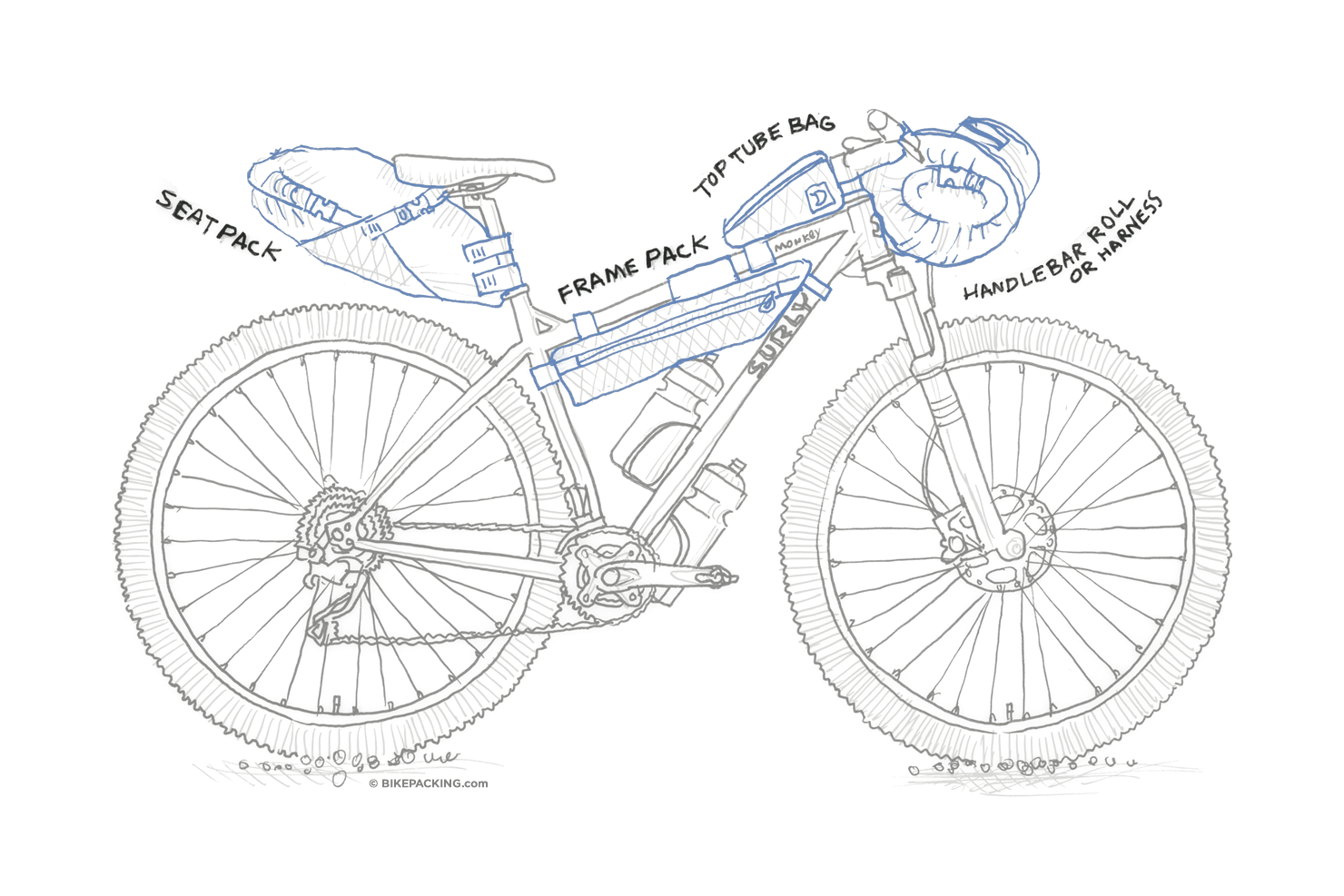
5 Comments. Leave new
Realy nice idea. I am also a big fan of designing.. visit this for getting help about desiging https://mechanicalboost.com/fuel-pump/
Hey James
This project sounds really cool. I had never heard of bikepacking until now, but it sounds interesting and like a lot of fun. I didn’t see anywhere in your post that said you’ve been bikepacking, are you going to use your project to maybe test it out for a trip? I know you said it could be hard to acquire waterproof fabric of specific colors/aesthetics, but is there an option to have a black/white waterproof fabric and then sew on a thinner piece of fabric on top to add an aesthetic? I’m not sure if it would work with the design though.
Hey Callum,
I haven’t ever been bikepacking before. I have been a pretty regular mountain biker and backpacker for a long time now, and I think that I will like the activity because of its similarities to activities that I know I enjoy. Part of the reason I want to make bags, though, is because I’ve never done it before and buying bags new can become expensive. I have thought about adding design elements as a surface fabric, but I wonder if they would get really heavy when they become wet. I have also considered creating a harness for the handlebar bag (which will make attaching it to the bike easier) that I could make with more aesthetically pleasing fabrics that don’t need to be waterproof. Additionally, I have considered the use of liners on the inside as a place to add design elements.
Hi James, cool idea! Even for someone who isnt into bikepacking, this would be really useful! Sort of a more modern (and mature) take on the baskets some bikes have to carry things. I suppose you could just keep it in a backpack, but attached to the bike it cool! I would be worried about all my things falling out the ends if the closing mechanism isnt super durable though… Do you think the pull string or velcro would be secure enough to keep everything from falling out?
Hi Brayden,
Yeah, if you have your eyes peeled, you can definitely see people using bags like this while commuting in Boulder. Ironically, it is actually quite common for people to use front baskets while bikepacking too. I will almost certainly need to wear a backpack still even with bags all attached to my bike since I don’t really have any “ultralight” camping gear. In terms of the closing mechanisms, I am not overly concerned. One reason that I am confident in their strength is that the straps needed to go around the bags and attach to the bike should provide enough friction that the stuff inside the bags doesn’t move all that much. Velcro is probably one of the strongest closing mechanisms that I could use, but I would need to make sure that there is adequate surface area for a secure seal. The pull string could be weak, but as long as I use appropriate materials (those made specifically for outdoors use) I am sure that it would last quite a while before failing.